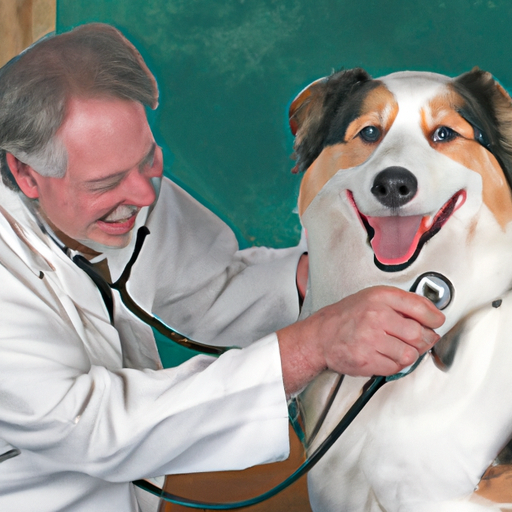As a caregiver, your pet’s health is surely one of your primary concerns. You’re not just responsible for their daily meals and walks, but also for understanding their physical health on a deeper level. One such aspect that often goes unnoticed is your dog’s heart rate. It’s a critical indicator of your pet’s wellbeing, and understanding it could potentially save your dog’s life. Let’s delve deeper into this topic.
Understanding Heart Rate in Dogs
Your dog’s heart rate is the number of times their heart beats in one minute. This vital statistic varies depending on the size, age, and overall health of your canine friend.
For instance, puppies have a much higher heart rate than adult dogs, ranging from 160 to 200 beats per minute (bpm). Adult dogs, on the other hand, tend to have a heart rate ranging from 60 to 140 bpm. Smaller dogs usually have a higher heart rate, with rates ranging from 100 to 140 bpm, while larger dogs have a slower heart rate, typically between 60 and 100 bpm.
The table below provides a general idea of the expected heart rates in dogs:
| Size | Average Heart Rate |
|---|---|
| Small Dogs | 100-140 bpm |
| Large Dogs | 60-100 bpm |
| Puppies | 160-200 bpm |
How to Measure Your Dog’s Heart Rate
Measuring your dog’s heart rate is a simple process that you can undertake at home. Here are the steps you should follow:
- Place your hand on your dog’s lower rib cage – just behind the elbow. You should be able to feel the heart beating.
- Count the number of beats you feel in 15 seconds.
- Multiply that number by four to get the number of beats per minute.
Please remember, if you’re having trouble finding a pulse, consult with a veterinarian. They can guide you and even demonstrate the correct technique.
Why Monitoring Heart Rate is Important
Just like in humans, a dog’s heart rate can indicate various health issues. A heart rate that’s too high (tachycardia) could suggest problems like anemia, heat stroke, or heart disease. Conversely, a heart rate that’s too low (bradycardia) might indicate issues such as hypothermia, side effects from medication, or a neurological disorder.
By regularly monitoring your dog’s heart rate, you’ll be better equipped to notice any sudden changes and seek veterinary assistance if required.
When to Consult a Vet
While it’s beneficial to monitor your dog’s heart rate, it’s equally important to know when you should consult a vet. Seek professional help if you notice:
- A persistent increase or decrease in heart rate.
- Irregular heart rhythms.
- Weak or absent pulse.
- Any signs of distress such as difficulty breathing, lethargy, or loss of appetite.
Remember, your vet is the expert. While monitoring heart rate at home is useful, it should never replace regular vet check-ups and professional advice.
Frequently Asked Questions
Q: What is a normal heart rate for a dog?
A: The normal heart rate for a dog varies based on their size and age. Adult dogs have a heart rate between 60-140 bpm, while puppies have a heart rate of 160-200 bpm. Smaller dogs tend to have a heart rate of 100-140 bpm, while larger dogs have a heart rate of 60-100 bpm.
Q: How can I tell if my dog’s heart rate is too high?
A: If your dog’s heart rate is persistently above the normal range for their size, or if they are showing signs of distress like difficulty breathing, lethargy, or a lack of appetite, their heart rate may be too high. It’s best to consult your vet in such scenarios.
Q: How can I tell if my dog’s heart rate is too low?
A: If your dog’s heart rate is persistently below the normal range for their size, or if they are showing signs of weakness, dizziness, or lethargy, their heart rate may be too low. Again, it’s best to consult your vet in these cases.
Q: What factors can influence my dog’s heart rate?
A: Many factors can influence a dog’s heart rate, including their age, size, overall health, level of physical activity, and even the surrounding temperature.
Q: How often should I check my dog’s heart rate?
A: Checking your dog’s heart rate once a month is usually sufficient. However, if your pet has a known health issue, your vet may recommend checking it more frequently.
By monitoring your dog’s heart rate and understanding what it means, you’re taking another step in ensuring their health and happiness. Just remember, when in doubt, always consult your vet.



